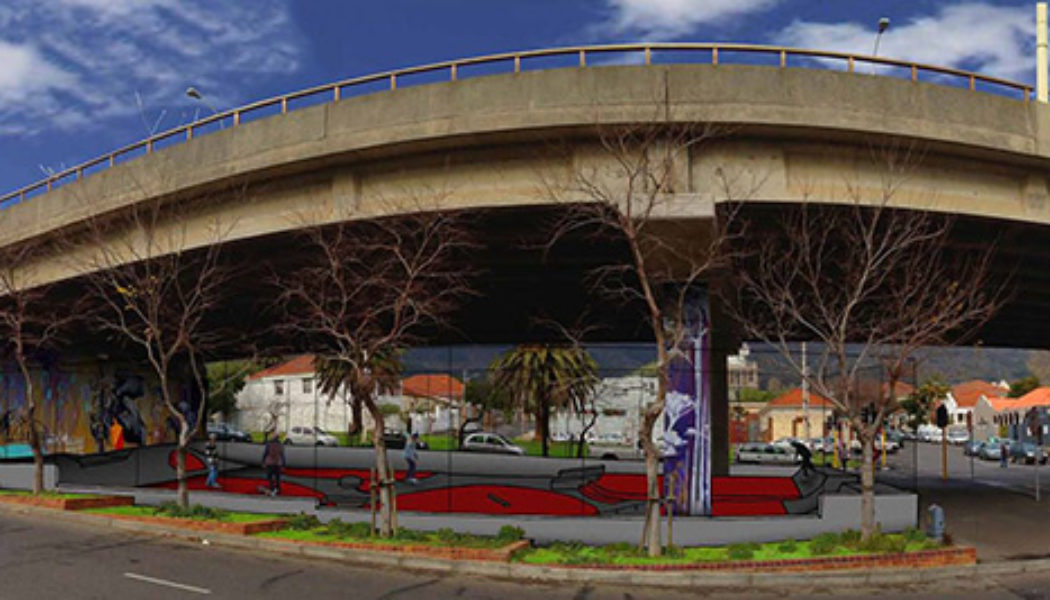Blog
NYC Landscape Architecture Travel Series #6: Bryant Park
With its great sun-kissed lawn flanked by a collonnade of London Plane trees, Bryant Park ranks high on landscape architect Jeff Gonot’s list of favorite places he’s visited on his trip through New York City. People were everywhere in the park: playing chess, bocce, ping pong; reading from the outdoor library; and relaxing away from the hustle and bustle of the city on a peaceful afternoon in the park. From the Bryant Park website: “By 1979, New York seemed to have given up Bryant Park for lost as an urban amenity, as well as an historic site. In 1974, the Landmarks Preservation Commission designated Bryant Park as a Scenic Landmark, calling it “a prime example of a park designed in the French Classical tradition… an urban amenity worthy of our civic pride.” Five years l...Read More
NYC Landscape Architecture Travel Series #5: Paley Park
For landscape architect Jeff Gonot, Paley Park is the epitome of urban design. After spending an afternoon there sketching and absorbing the many elements of the inspiring pocket park, he writes: Everything about the space is perfect. Image via Wikimedia A small pocket park nested in the heart of midtown Manhattan, Paley Park is a celebrated and lush urban oasis surrounded by high-rises. Created after its benefactor, William Paley, the beloved park was immortalized in William H. Whyte’s famous film The Social Life of Small Urban Spaces. Completed in 1967 and designed by Zion and Breene Associates, Paley Park has been lauded as a successful example of a privately owned public space. A 20-foot tall waterfall creates a dramatic focal point that draws pedestrians in and provides a blanke...Read More
NYC Landscape Architecture Travel Series #3: Brooklyn Bridge Park
This week, Land8’s NYC travel series kicks off in Brooklyn, as landscape architect Jeff Gonot takes on Brooklyn Bridge Park. Read on for his travelogue! Located next to the DUMBO (Down Under Manhattan Bridge) neighborhood, Brooklyn Bridge Park is an award-winning public space that provides beautiful views into Manhattan and a great way to see New York through the eyes of locals. Designed by landscape architect Michael Van Valkenburgh, the 85-acre waterfront park “presents a once-in-a-lifetime opportunity for the neighborhoods of Brooklyn and for the city as a whole.” Open space with Manhattan Bridge in the foreground. It was a warm and beautiful sunny day when I visited; the food trucks were out and so were the colorful crowds. It’s hard to imagine now, but it was ...Read More
Jeff Gonot’s NYC Travel Series #2: Four Freedoms Park
Join landscape architect and Land8 member Jeff Gonot as he continues on his adventures through New York City as part of Land8’s new Tuesday Travel series. Today, Jeff takes us on a visit to the Louis Kahn-designed Four Freedoms Park, an enduring and uplifting tribute to the life and work of President Franklin D. Roosevelt. Located along one of NYC’s most dramatic waterfronts, the triangular, four-acre space replaces a former landfill with a pristine, meditative park that has been compared to a walk-in sculpture. Dedicated to FDR and his beliefs in the Four Freedoms, this recently completed park sits at the southern tip of Roosevelt Island, where it provides a vast reflective space. Upon entering the site, white granite rises dramatically above the horizon. Closer still, one can...Read More
NEW Land8 Series: Landscape Architect Jeff Gonot Explores New York Starting With The High Line
There is no place on earth quite like New York City. With its unwavering ability to reel you in, the city is fertile ground for new artistic movements, architecture, and of course–public spaces. On every Tuesday for the next eight weeks, Land8 is pleased to share with you a brand new travel series on New York City’s parks and places through the eyes of Land8 member and landscape architect Jeff Gonot. Described as part vacation and part mecca, read on to see Jeff’s unique thoughts and original photography throughout his journey. High Line In recent history, I believe the High Line has done more for the development of urban design than any other pedestrian-oriented design. Located in the Chelsea neighborhood of Manhattan, this 1.45 mile stretch of elevated-railline-turned-p...Read More
5 Countries Where Landscape Architecture is Booming
The worldwide economic crisis has clobbered the labor forces of all professions quite harshly. And in the frame of a squeezing budget, funding tends to center on basic needs, such as education, health care, and food industries (and undoubtedly wars, but let us not go there). Meanwhile, the land development market — unfortunately considered to be a secondary necessity — tends to be among the fields suffering the most. Since 2008, many landscape architects have been let go worldwide, especially in the United States having a huge impact on landscape architecture . However, while “booming” might be to some extent exaggerated, there seems to be a great demand for professionals in the landscape construction and sustainable energy domains in several countries. So if you are a landscap...Read More
Urban Agriculture Series #6: Interview with Ran Goel – Fresh City Farms Founder
As one of the very first urban farms I discovered, Fresh City Farms in Toronto holds a special place in my heart. So it was with great excitement that I was finally able to sit down and interview Ran Goel, the Fresh City Farms Founder who perfectly captures the energy and spirit of FCF’s mission. In my interview, I asked Ran about FCF’s role in urban agriculture and its relations to landscape architecture. Read on for the full interview! Example of the fresh produce and recipe card in the weekly food bags. Fresh City Farms is Toronto’s ultimate urban food producer. With a mission to “create and perfect new ways to connect food makers and eaters,” the organization does an excellent job teaching, challenging and encouraging the urban community. Going above and beyond your a...Read More
And the Winner Is … PLAYscapes Design Competition Results
Back in April, we reported on the PLAYscapes Competition hosted by Building Trust International, which sought out creative proposals for underachieving sites. Over the course of the past five months, more than 500 registered entrants submitted designs to a diverse jury, including representatives from Building Trust International, Project for Public Spaces, BMW Guggenheim Lab, Landscape Architects Network, 3Space, Neon Stash, Land8, and academics and professionals from the fields of architecture and landscape design. Well, the wait is over — and the winning entries in the professional and student categories have been announced. The Winning Entry in the Professional Category A multidisciplinary team from the City of Cape Town has been announced as the Professional winner in the design ...Read More
Tech Beat Tuesday – AutoCAD Tip #1: Paving Header Course
If boosting work efficiency is one of your New Year’s resolutions, you’ll love Land8’s new series. To kick off the new year, Land8 member Paul Stafford will be contributing his AutoCAD tips and tricks every week as part of Tech Beat Tuesdays. Keep reading for his easy to follow tutorial on creating paving header course! A paving header course adds an extra level of detail to your hard finishes plans and graphically helps to complete the picture. If used together with a paving hatch pattern it gives a very good indication of your design intent. But the paving header course can be very time consuming to create if you do it all manually. The paver size I will represent is 230mm long x 115mm wide x 60mm thick – though of course for this purpose the thickness is irrele...Read More
AutoCAD Tip #4: Boost Your AutoCAD Productivity with an AutoLISP Program File
AutoLISP is a programming language that works with the full version of AutoCAD. Though it doesn’t work natively with AutoCAD LT, there are 3rd party addons that do enable AutoLISP for AutoCAD LT. At it’s most simple level, AutoLISP can be used to automate repetitive tasks to help increase your AutoCAD productivity. For example an AutoLISP program that I use all the time can calculate the total area of all polylines on each layer in the drawing – HUGE time saver. At the other end of the spectrum AutoLISP can create hugely complex programs that can vastly increase the functionality of AutoCAD. WATCH THE VIDEO TO SEE TWO WAYS TO LOAD AN AUTOLISP PROGRAM FILE METHOD 1 Drag the AutoLISP file onto your AutoCAD drawing. This is very quick method. The downside is that the Aut...Read More
TechBeat Tuesday – AutoCAD Tip #5: Quantity Takeoff and Costing Spreadsheet
A common requirement in a design business is the need to do a quantity takeoff and costing spreadsheet for your design at each phase of the project. The following describes a fairly basic process to achieve this using AutoCAD and either Excel, OpenOffice or Google Apps. The quantity takeoff and costing spreadsheet creation method I will demonstrate requires the following: 1. AUTOCAD DRAWING An AutoCAD drawing with a hatch boundary polyline on a unique layer for each and every different treatment type. Thus each and every treatment has a unique hatch layer and hatch boundary layer. For example the concrete pavement layer names would be L-PAVE-CONC-HTCH – this is the hatch layer L-PAVE-CONC-HTCH-BDRY – this is the hatch boundary layer Good layer naming and management is vital to...Read More
4 Business Lessons from the Kid with a Lemonade Stand
As cliché as a Norman Rockwell painting, kids have been selling lemonade on hot afternoons since suburbs were invented. While you may have thought these little stands to be cute—and maybe you’ve even bought a cup or two—have you ever stopped to think about the business lessons you could learn from a kid with a lemonade stand? These little entrepreneurs are made of the toughest stuff in business. While other businesses are worrying about exit strategies and looking for cash from venture capitalists, the kid with the lemonade stand is already turning a profit. She is out there walking the walk, while “bigger,” more “serious” people are just talking the talk. She is making a profit, and she has a few things to teach you. Here are four lessons learned from the kid with the lemonade stand. 1....Read More
























